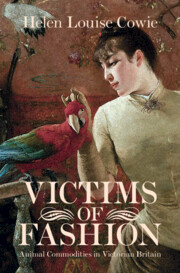Book contents
4 - Silk of the Andes
Published online by Cambridge University Press: 29 October 2021
Summary
Chapter 4 focuses on alpaca wool – a novel South American fibre that first entered British markets in the mid-1830s. Already widely used in Peru, alpaca wool first took off in Britain in 1836, after the woollen manufacturer Titus Salt discovered a bag of the fibre while walking through the docks in Liverpool. It was imported in increasing quantities from Peru in the 1840s and 1850s and used for the manufacture of shawls, cloth, ladies’ dresses and umbrellas. Charting the alpaca’s journey from the Andes to the outback, the chapter considers why contemporaries set so much store by the animal and how they went about appropriating it. It assesses how increased access, new technologies and new markets made alpaca wool viable and profitable as a luxury fabric and examines the transcontinental relationships that brought alpaca fibre, and later living alpacas, to Britain and its colonies. The chapter also emphasises the important local and regional dynamics of alpaca naturalisation, and the ways in which alpacas infiltrated wider discussions about identity, free trade and biopiracy. It concludes with a study of the alpaca’s wild relative, the vicuña, hunted to the point of extinction for its coveted fleece.
- Type
- Chapter
- Information
- Victims of Fashion , pp. 126 - 167Publisher: Cambridge University PressPrint publication year: 2021



